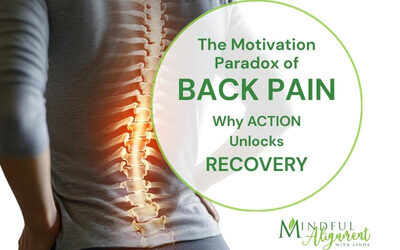Spinal Health & Osteoporosis
“Let’s Twist Again … “ Or Not: Spinal Health & Osteoporosis
For the past few weeks, I have written about osteoporosis and bone health (see the summary of relevant articles at the end). Yoga poses as well as other forms of exercise incorporate twisting and can help to keep bones healthy.
There is a disagreement among fitness and medical professionals about whether to twist or not if you have osteoporosis.
For example, the State of New Jersey has an education and exercise program for osteoporosis, which restricts participants from twisting. However, many professionals, chiropractors, fitness professionals, yoga teachers, Feldenkrais, and the National Osteoporosis Foundation have stated that twisting is allowable “under certain conditions.”
Why the difference of opinion?
First, twisting could cause a fracture of the spine. Also, rounding forward puts pressure on the vertebrae with the risk of compression fractures if the bones in one’s spine are weak.
What are the benefits of twisting?
One, twisting helps keep the side of the body and the spine flexible. Secondly, twisting allows people to walk without shuffling, reducing the likelihood of falling or tripping. Automobile driving without twisting would be a challenge because it requires some moving of the torso to drive. Also, people could not dance, swim, play tennis or golf – – to name just a few pursuits. Absent any twisting, the spine would get stiff. Eventually, it would not move!
Our bodies are made to move. Twisting can help activate the muscles around the lumbar spine and abdominal core, which increases stability and increases blood flow to that area. Proper twisting techniques may help the back muscles feel better, resulting in less back pain. Also, movement of the spine is believed to play a significant role in maintaining upright posture and balance; plus it enhances shock-absorbing ability during walking.
Some Best Practices:
- Protect the spine by moving properly while exercising and moving throughout your day. Strengthen your back and abdominal muscles.
- Warm-up before exercising or doing any movement practice.
- Perform stretches gently.
- Stop if you feel any pain.
- Always bend forward from the hip crease, not the waist, while keeping a flat back.
- Avoid carrying heavy packages.
- When picking up something substantial from the floor, bend your knees, and use your leg muscles to do the lifting, rather than your back muscles.
FYI: The American College of Sports Medicine recommends stretching two to three days per week, holding each stretch for 15 to 30 seconds.
If you ever have concerns about the strength of your bones or have osteoporosis, always consult your physician before doing any exercise.
10 yoga poses that can help keep your spine healthy
Many yoga poses can help keep the spine flexible and healthy without placing that spine under any undue risk:
- Gentle backbends
- Mild side bends
- Cow pose
- ‘Windshield-wiping’ of the knees while lying on your back
- Folding forward halfway with a flat back
- Gate pose
- Tree pose
- Camel pose with hands on the lower back
- Bridge pose
- Savasana
Once again, we can see the universality of yoga and the benefits of flexibility, strength, agility, and spine health.
Remember: Always consult your doctor before beginning any exercise program.
To learn more about osteoporosis, read these recent articles:
“Osteoporosis 1 – Osteoporosis & Ways to Prevent It”
“Osteoporosis 2 – Exercises for Bone Health”
“Osteoporosis 3 – Breathing for Bone Health”
Do you need help with your health and wellness journey? Schedule a one-on-one consultation.
Related Articles:
The Motivation Paradox: Action is the Catalyst for Healing Back Pain
Discover the Motivation Paradox of Back Pain—why waiting for motivation keeps you stuck and how action is the true catalyst for healing. Learn science-backed strategies to break the pain cycle and reclaim mobility.
Transform Back Pain Anxiety: From Uncertainty to Empowerment
Discover how to navigate pain anxiety with empowerment. Embrace uncertainty and reclaim your healing journey through mindfulness and resilience.
Transforming Your Relationship with Back Pain: A Mindset Revolution
Back pain is more than a physical challenge—it's a profound psychological journey. The real battle isn't just in your muscles and joints, but in your mind. Your thoughts can either be a prison or a pathway to healing. Reframing Your Inner Narrative When chronic pain...
Embracing Change: A Journey of Small Steps
Embracing change through small steps: Focusing on small, consistent steps emphasizes sustainability and avoids overwhelming change, which is key to maintaining health goals.




